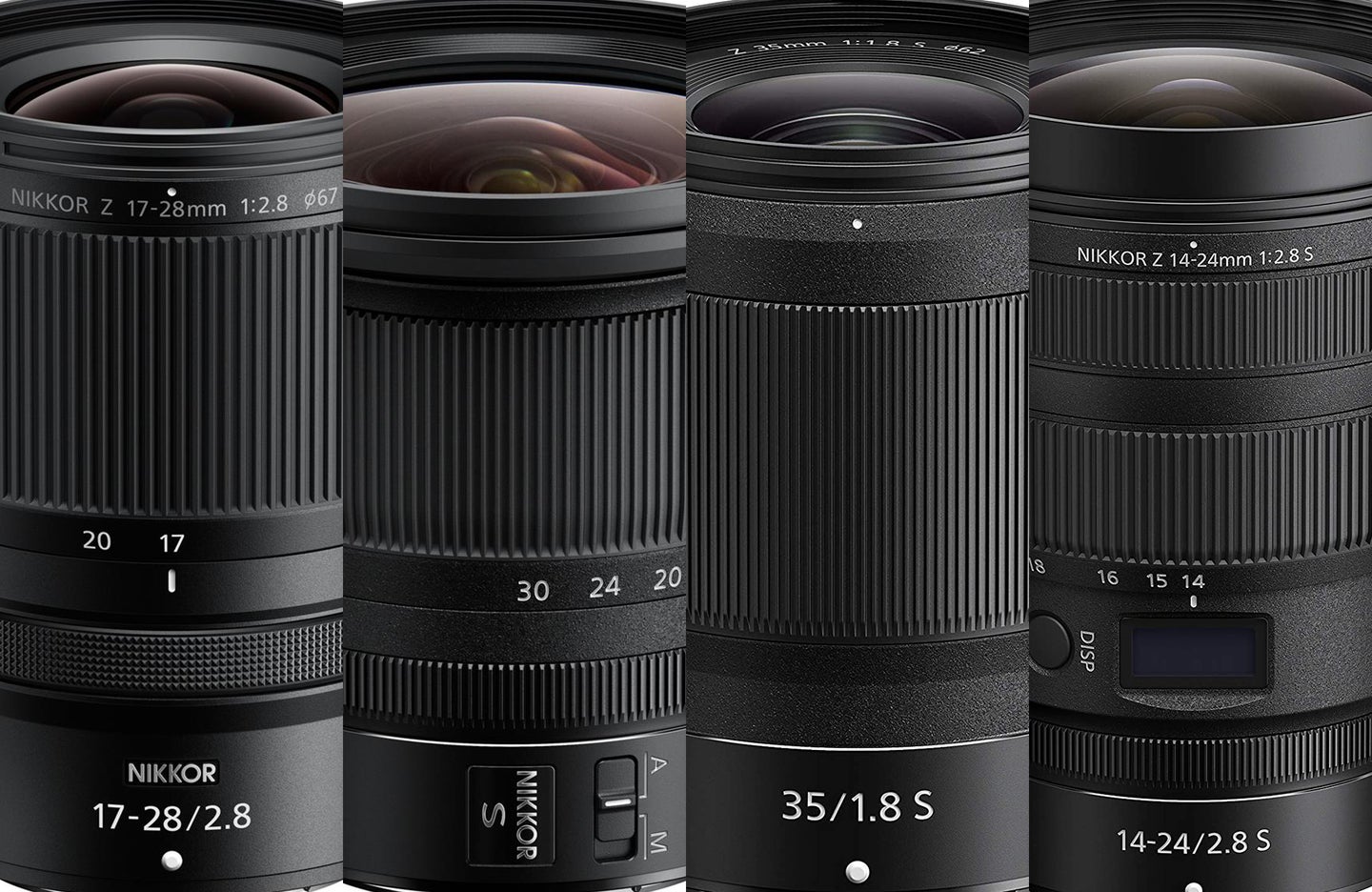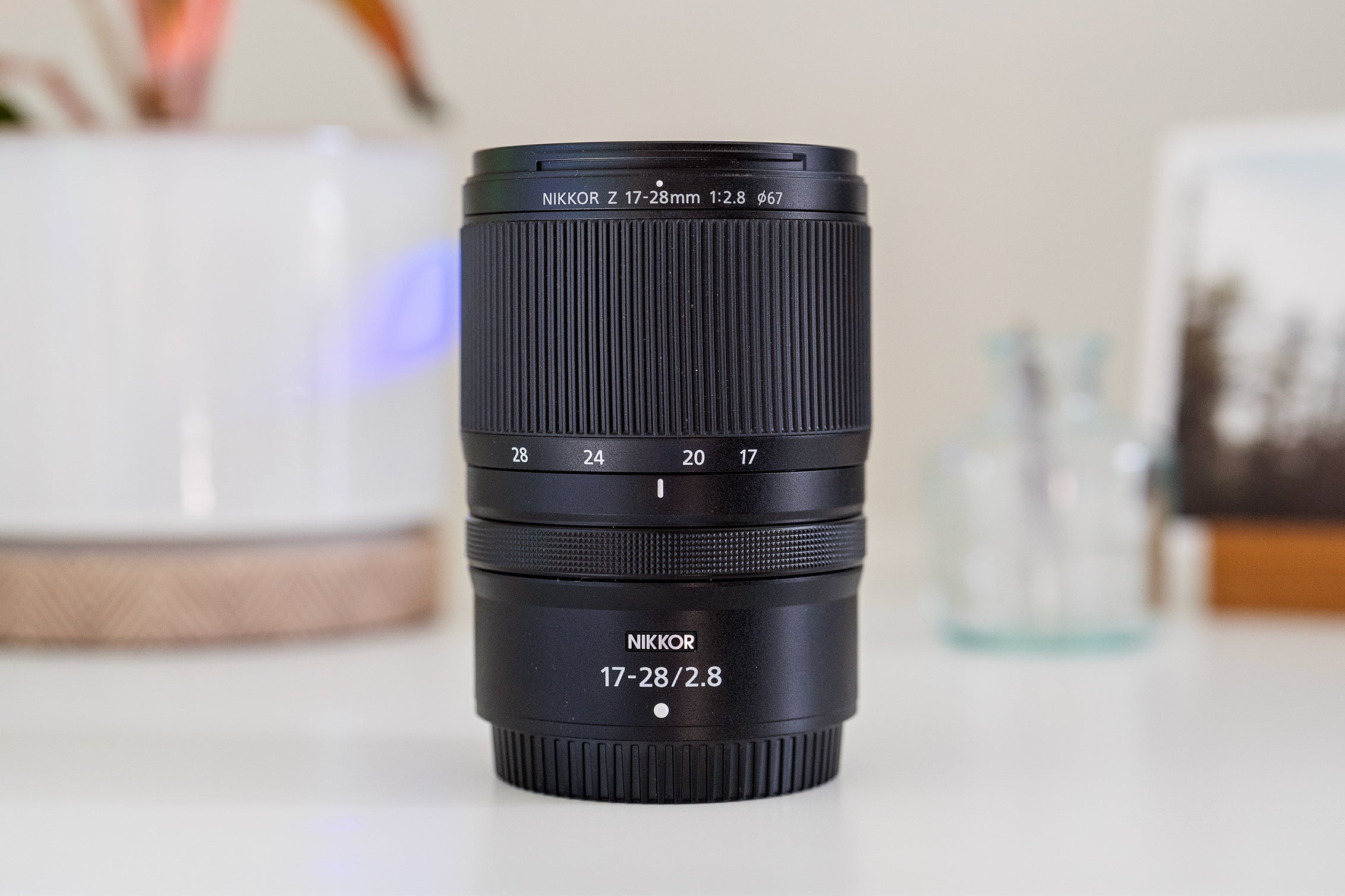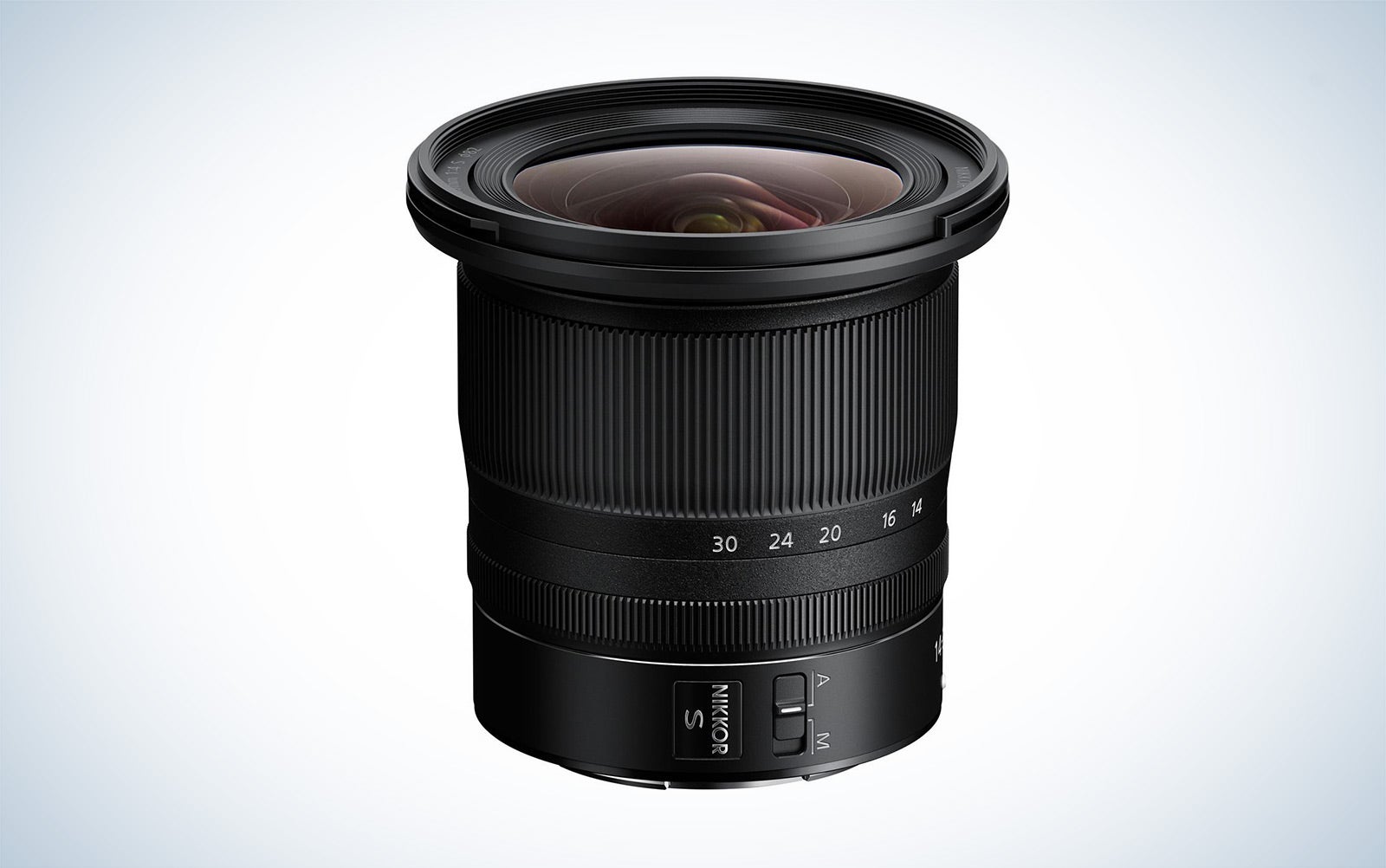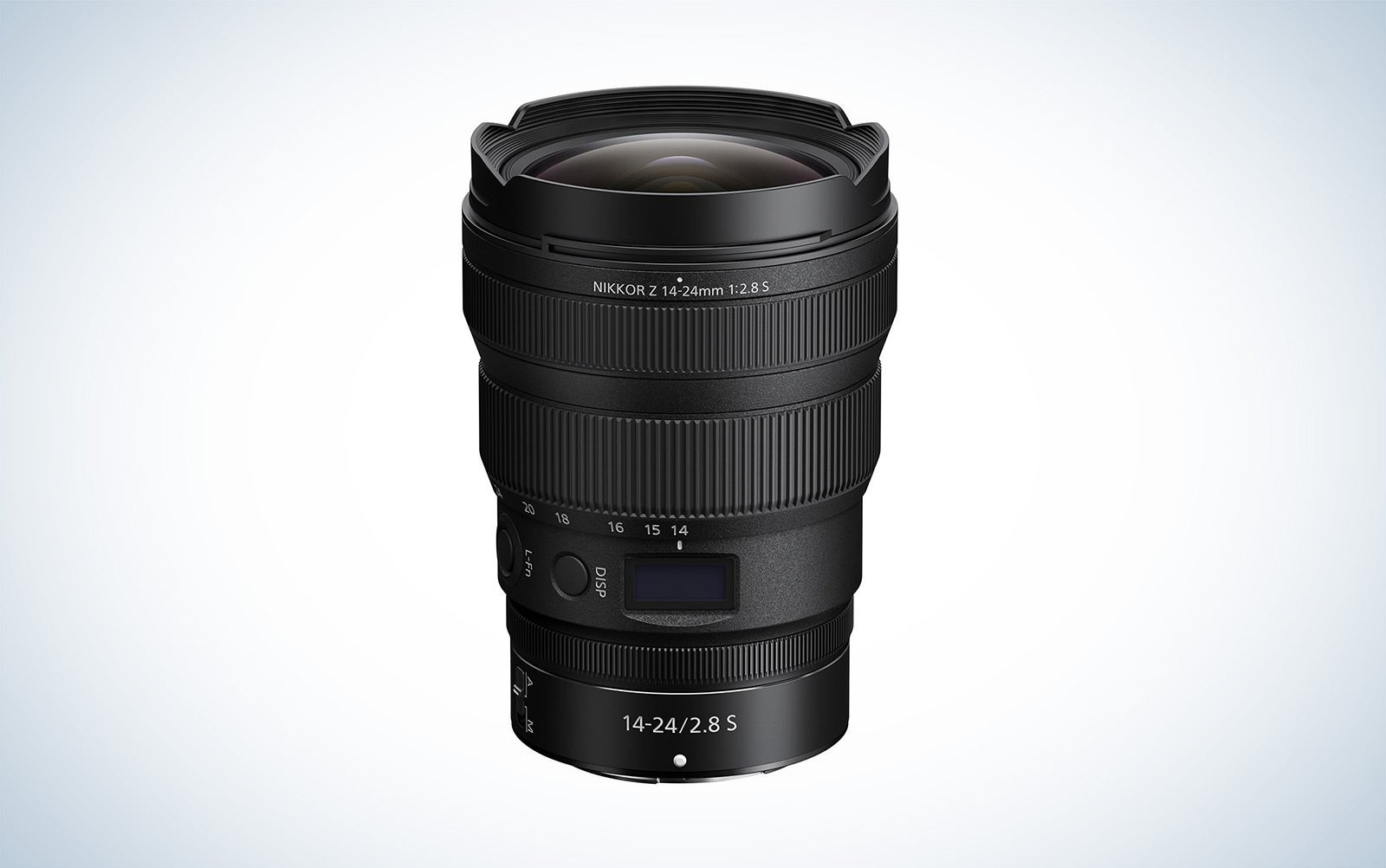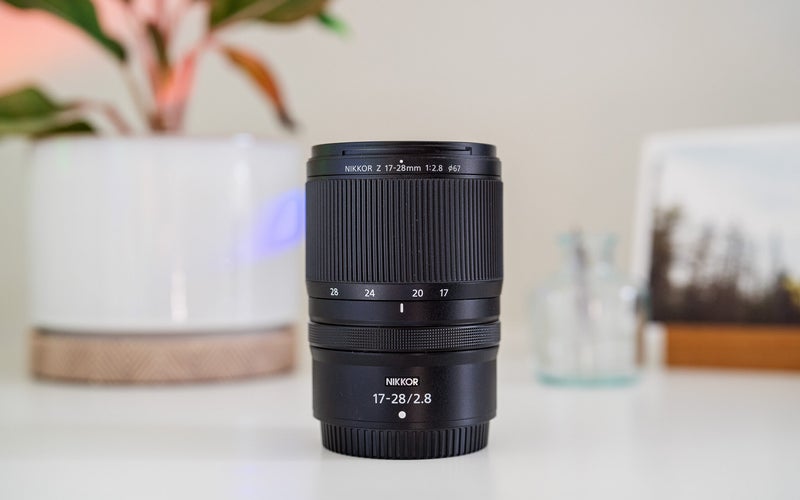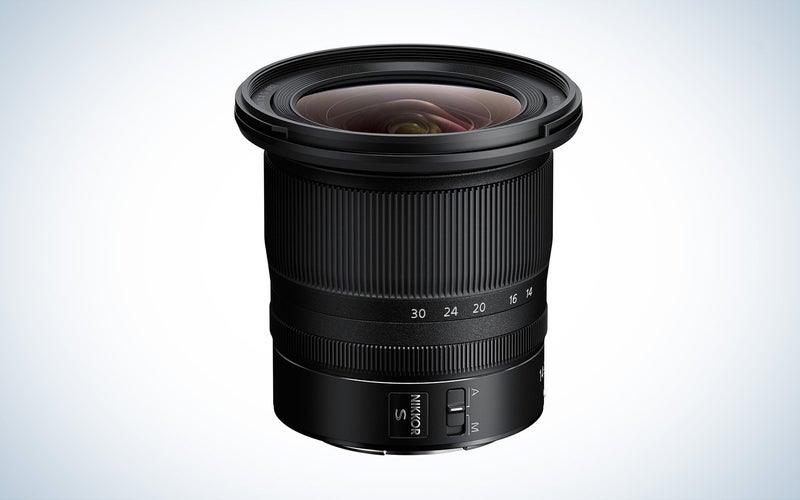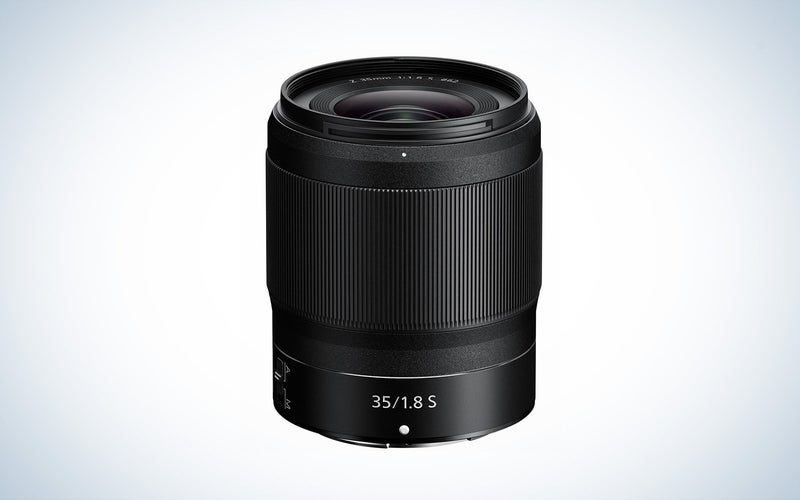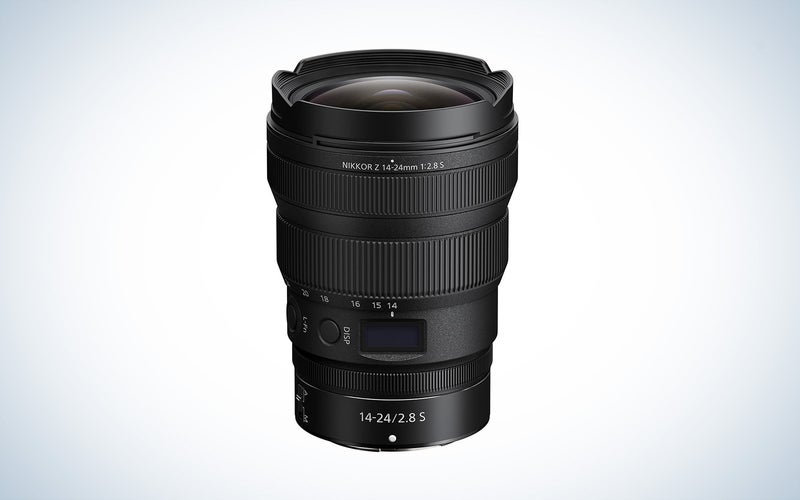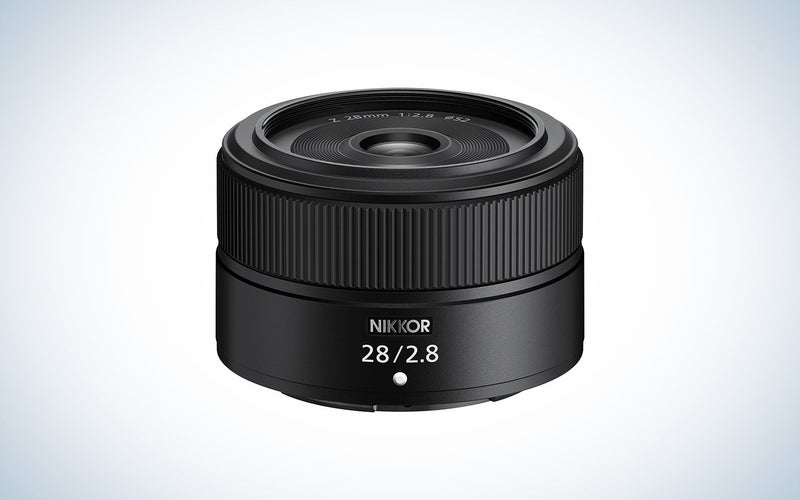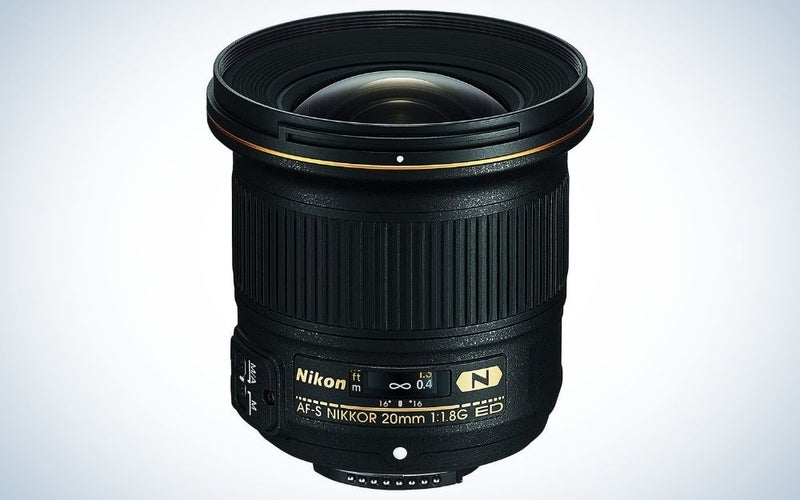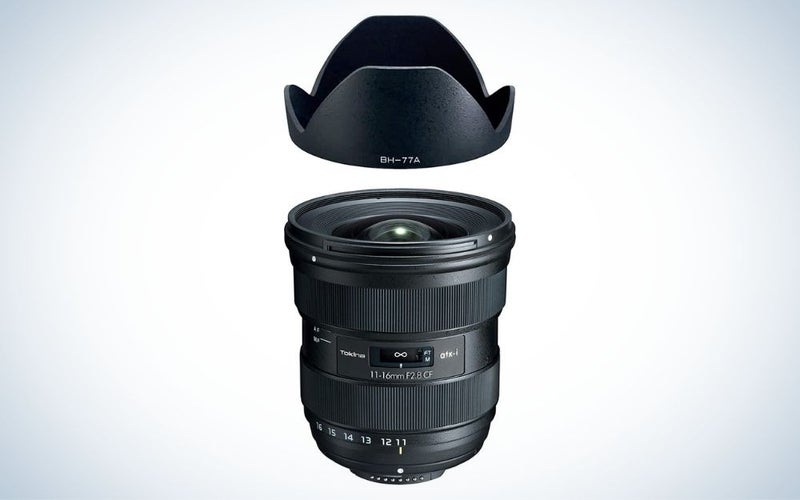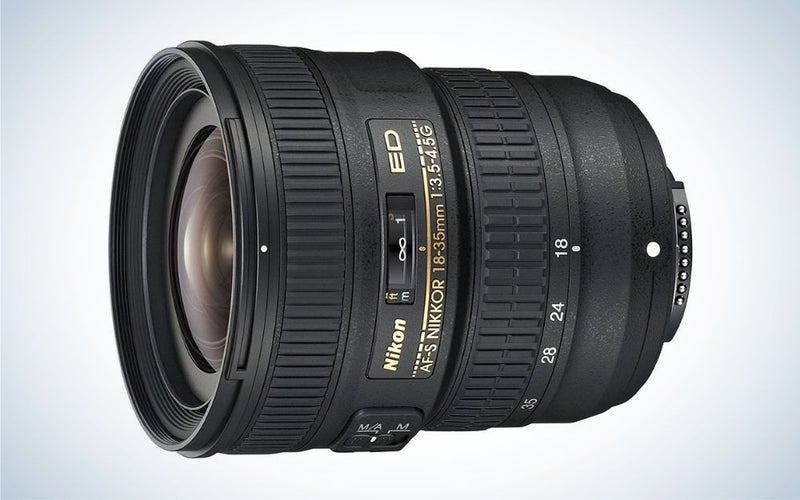We may earn revenue from the products available on this page and participate in affiliate programs. Learn more ›
Wide-angle lenses for Nikon cameras (or any other brand, for that matter) are much more versatile than they get credit for. A wide angle is ideal for broad landscapes, night skies, group photos at events, and real estate images. They can also provide a unique perspective for portraits and fashion images. Some even allow for fun detail shots. So no matter what you intend to shoot, the best wide-angle lens for Nikon cameras can help spark creativity and bring your ideas to life.
Best wide-angle lenses for Nikon mirrorless:
- Best overall: Nikon NIKKOR Z 17-28mm f/2.8
- Best for pros: Nikon NIKKOR Z 14-30mm f/4 S
- Best prime: Nikon NIKKOR Z 35mm f/1.8 S
- Best for real estate: Nikon NIKKOR Z 14-24mm f/2.8 S
- Best budget: Nikon NIKKOR Z 28mm f/2.8
Best wide-angle lenses for Nikon DSLRs:
- Best overall: AF-S NIKKOR 14–24mm f/2.8G ED
- Best prime: Nikon AF-S FX NIKKOR 20mm f/1.8G ED
- Best for DX: Tokina ATX-i 11-16mm f/2.8 CF
- Best budget: Nikon AF-S FX NIKKOR 18-35mm f/3.5-4.5G ED
How we picked the best wide-angle lens for Nikon
We looked at various features when selecting the best wide-angle lens for Nikon cameras. As with all lens reviews, the lens quality (sharpness, distortion, and chromatic aberration) represents one of the primary considerations. We also aimed to choose lenses that covered a wide range of the wide-angle spectrum, from ultra-wide to more conventional wide-angle. Additional features such as weather-sealing, lens controls, aperture range, and price were also factors. The lenses were evaluated through a combination of hands-on experience, editorial reviews, and user feedback.
The best wide-angle lenses for Nikon mirrorless: Reviews & recommendations
Best overall: Nikon NIKKOR Z 17-28mm f/2.8
Abby Ferguson
Specs
- Lens mount: Z-mount, full frame
- Aperture range: f/2.8 – f/22
- Image stabilization: No
- Filter size: 67 mm
- Minimum focus distance: 7.5 inches
- Weight: 15.9 ounces
- Dimensions: 3 x 4 inches
Pros
- Compact and lightweight
- Silent and fast autofocus
- Fast and constant maximum aperture
- Good close-focusing abilities
Cons
- Focal length range isn’t quite as versatile
- Not as sharp as other lenses
The Nikkor 17-28mm lens is an excellent example of a simple yet well-rounded and versatile lens, which is why it’s our favorite wide-angle lens for Nikon. In fact, it stayed on my camera for entire hikes because it worked so well for such a wide variety of images and thanks to the lightweight build. It’s reasonably priced yet still offers a fast f/2.8 maximum aperture for better low-light performance. And the wide aperture, rounded nine-blade diaphragm, and ability to focus as close as 7.5 inches result in attractive bokeh and shallow depth of field. These open up more opportunities to use the lens.
It’s important to point out that the NIKKOR 17-28mm is not part of the company’s top-tier S line. The result is that it lacks some sharpness, especially when shooting wide open, as well as the edges of the frame. That’s not to say that you can’t get quality images with the lens, but it isn’t as sharp as Nikon’s S lenses.
The lens has a lot to make up for the lack of sharpness, however. For one, it offers extremely fast and silent autofocus. There’s a programmable control ring, which I like to use for ISO adjustments. It’s also dust- and moisture-resistant, so you can use it in inclement weather without worrying. The zoom is fully internal, making the lens an ideal choice for video work that requires a gimbal. And it weighs just less than a pound, making it much easier to carry around for a full day of shooting.
Best for pros: Nikon NIKKOR Z 14-30mm f/4 S
Nikon
Specs
- Lens mount: Z-mount, full frame
- Aperture range: f/4 – f/22
- Image stabilization: No
- Filter size: 82 mm
- Minimum focus distance: 11.02 inches
- Weight: 1.07 pounds
- Dimensions: 3.5 x 3.35 – 4.49 inches
Pros
- Exceptional sharpness
- Precise, quiet autofocus
- Versatile focal length range
Cons
- f/4 maximum aperture isn’t as lowlight friendly
If the 17-28mm is enticing to you, but you want a lens with higher resolution, the NIKKOR Z 14-30mm f/4 S is the way to go. As part of Nikon’s S line, the lens is extremely sharp. In fact, it’s one of the sharpest ultra-wide-angle zooms available. And on top of better sharpness, you also get a bit of extra reach in terms of focal length, which some may also prefer. It covers both the ultra-wide-angle side at 14mm for sweeping, dramatic landscapes and cityscapes while also being suitable for group photos and even portraits at 30mm.
While not as light as the 17-28mm, it is more compact. It features a locking mechanism to keep the lens at a tiny 3.3 inches when not in use. It does have a plastic build but is still robust enough with a dust- and moisture-resistant design to handle some rough conditions. In addition, Nikon’s fluorine coating on their Z lenses makes it easier to wipe off dust and thumbprints, so it’s easier to keep clean.
When it comes down to deciding between the 14-30mm f/4 and the 17-28mm f2.8, it’s a matter of your priorities. If sharpness is your main focus, then the 14-30mm is your best bet. It is also better for those who want a little more reach at both ends of the focal length range. But, if a fast maximum aperture is the most important thing, the 17-28mm should be your pick. Simply put, each lens has trade-offs.
Best prime: Nikon NIKKOR Z 35mm f/1.8 S
Nikon
Specs
- Lens mount: Z-mount, full frame
- Aperture range: f/1.8 – f/16
- Image stabilization: No
- Filter size: 62 mm
- Minimum focus distance: 9.84 inches
- Weight: 13.05 ounces
- Dimensions: 2.87 x 3.39 inches
Pros
- Very sharp across the frame
- Lightweight and compact
- Fast maximum aperture
- Durable construction
Cons
- Control ring is touchy
- Pricey for this type of lens
A 35mm prime is a classic focal length in photographers’ kits. It works well for landscapes, street photography, portraits, and more, making it versatile enough to keep on hand. That explains why the NIKKOR Z 35mm f/1.8 S was one of the first lenses Nikon rolled out for its Z-mount system. It offers a fast maximum aperture, ideal for low-light situations. And you can get a significant amount of background separation at f/1.8 as well, helping you isolate your subject for more impactful images.
As an S line lens, Nikon designed this 35mm prime to get the most out of high-resolution sensors such as the one found on the Nikon Z7 and Z9, resulting in excellent sharpness. While you can get very sharp images wide open, as is typically the case, the lens performs even better when stopped down slightly. As expected for a 35mm lens, there is some barrel distortion, but it is automatically corrected in most raw processing software.
The lens offers a rugged, weather-sealed design for use in inclement conditions. And at 13 ounces and 3.39 inches long, it’s relatively compact and lightweight, making it easy to keep on your camera or in your bag. The main downside to the lens is the price. It’s not astronomical, but it is the most expensive 35mm f/1.8 on the market right now.
Best for real estate: Nikon NIKKOR Z 14-24mm f/2.8 S
Nikon
Specs
- Lens mount: Z-mount, full frame
- Aperture range: f/2.8 – f/22
- Image stabilization: No
- Filter size: 112 mm (via hood) or gel rear filters
- Minimum focus distance: 11 inches
- Weight: 1.4 pounds
- Dimensions: 3.5 x 4.9 – 4.92 inches
Pros
- Exceptional sharpness
- Relatively compact and lightweight
- Useful OLED display
- Strong video performance
Cons
- Doesn’t accept traditional filters
Nikon’s AF-S 14-24mm F2.8G ED was a wildly successful lens, often regarded as the best ultra-wide for DSLRs. The Z-mount version of that lens carries on the legacy and even improves on it. It keeps the fast f/2.8 aperture and exceptional image quality. But luckily, it sheds some weight. The mirrorless iteration of the lens is nearly a full pound lighter than its predecessor. That’s very appreciated since the older lens was known for being so large and heavy.
Another worthy improvement is the ability to use filters, albeit in a still less-than-ideal way. The Z 14-24mm comes with a removable lens hood that allows you to use front filters. Unfortunately, those filters are large (112 mm) and thus expensive, and you have to have the lens hood attached to use them. You can also use rear filters. The DSLR 14-24mm didn’t accept any filters, though, so this, at least, is a step in the right direction.
This ultra-wide is also ideal for video applications thanks to the silent autofocus and extremely well-managed focus breathing. It also features an OLED display on the top of the lens, showing handy information like focal length and focus distance. That display can be helpful for real estate photographers who want to be precise with their focus or focal length. As we’d expect in an ultra-wide, there is some distortion, but it is easily corrected in post. That will save real estate photographers loads of time during the editing process, which is part of why this is one of our favorite lenses for real estate photography.
Best budget: Nikon NIKKOR Z 28mm f/2.8
Nikon
Specs
- Lens mount: Z-mount, full frame
- Aperture range: f/2.8 – f/16
- Image stabilization: No
- Filter size: 52 mm
- Minimum focus distance: 7.5 inches
- Weight: 5.5 ounces
- Dimensions: 2.8 x 1.7 inches
Pros
- Tiny form factor
- Very affordable
- Good sharpness
- Quiet autofocus
Cons
- No fluorine coating on the front element
- Strong vignetting
You don’t have to break the bank to get a worthwhile wide-angle lens for Nikon cameras. This Z-mount 28mm is priced at around $300, making it the cheapest mirrorless lens for Nikon cameras of any focal length. But don’t let the low price fool you; it still has a lot to offer. Nikon also makes a Special Edition version of this lens that features old-school styling and the same optics for $30 more.
Besides the low price, one of the selling points of this 28mm is the tiny size. It weighs only 5.5 ounces and is a paltry 1.7 inches long. While not quite a pancake lens, it will barely be noticeable on your camera. The tiny size and wide focal length make it a fantastic travel companion. The lens also has nearly silent autofocus, which is a plus if you are photographing in quiet locations or creating videos.
Of course, with the low price, there must be some compromise. While the lens provides good overall sharpness, it won’t offer the same high-resolution results as S lenses. And you’ll need to stop the lens down to get the most sharpness. There is also a good amount of chromatic aberration. The lens is still quite good, especially for the price, but if you are looking for ultimate image quality, this lens won’t cut it for you. But this lens will serve you well if you’re looking for an affordable entry point to a wide-angle perspective.
The best wide-angle lens for Nikon DSLRs: Reviews & recommendations
Best overall: AF-S NIKKOR 14–24mm f/2.8G ED
Nikon
Specs
- Lens mount: F-mount, full-frame
- Aperture range: f/2.8 – f/22
- Image stabilization: No
- Filter size: N/A
- Minimum focus distance: 11.02 inches
- Weight: 2.2 pounds
- Dimensions: 3.86 x 5.18
Pros
- Exceptional sharpness
- Minimal lens distortion
- Fast autofocus
Cons
- Not compatible with standard filters
Real estate photography typically requires ultra-wide angles, and Nikon’s 12-24mm fits the bill. It has very minimal distortion for such a wide focal length, which is essential when shooting interiors. In addition, the Nano Crystal Coat cuts down on lens flare and ghosting, so shooting toward windows with direct sunlight won’t be as much of an issue.
Though ultra-wide-angles are notorious for sharpness losing sharpness around the edges, Nikon’s 14-24mm performs well and is reasonably sharp edge-to-edge. The f/2.8 aperture is also a plus, as it makes this lens more versatile. While you will never get an extremely shallow depth of field with a wide-angle lens, the wide maximum aperture does allow you to blur the background nicely when the situation calls for it.
Best prime: Nikon AF-S FX NIKKOR 20mm f/1.8G ED
Nikon
Specs
- Lens mount: F-mount, full-frame
- Aperture range: f/1.8 – f/16
- Image stabilization: No
- Filter size: 77 mm
- Minimum focus distance: 7.87 inches
- Weight: 12.52 ounces
- Dimensions: 3.25 x 3.17 inches
Pros
- Extremely sharp
- Very lightweight
- Accepts 77mm filters
Cons
- A little pricey for its limited versatility
Prime lenses are not everyone’s cup of tea due to their limited practicality for some shooting styles. But prime lenses offer a bit higher quality and smaller size at a lower price. For those who like to use primes, the 20mm is an excellent option. It is wide enough to get wide, sweeping landscape shots but not so wide that you will get fisheye distortion. Plus, the size and weight of this lens make it easy to throw in your camera bag on trips.
The sharpness of this lens is incredible and that’s one of the main draws. The f/1.8 aperture is also attractive, especially for those taking photos of stars or using the lens in other low-light situations. There is very minimal chromatic aberration, and ghosting and flare aren’t much of an issue either. Overall, the quality you get with this lens is excellent, and the price is reasonable for such quality as long as you don’t mind the limited versatility.
Best for DX: Tokina ATX-i 11-16mm f/2.8 CF
Tokina
Specs
- Lens mount: F-mount, APS-C
- Aperture range: f/2.8 – f/22
- Image stabilization: No
- Filter size: 77 mm
- Minimum focus distance: 11.81 inches
- Weight: 1.22 pounds
- Dimensions: 3.31 x 3.51 inches
Pros
- Budget-friendly
- Excellent sharpness
- Fast f/2.8 maximum aperture
Cons
- Autofocus is a bit noisy
While Nikon makes a handful of wide-angle options for their APS-C cameras, Tokina offers an excellent alternative, the most important of which is price. Though the focal length is slightly different, Tokina’s 11-20mm is roughly half the price of Nikon’s 10-24mm. The other factor that helps push the Tokina ahead is the fixed f/2.8 maximum aperture, which is wider than Nikon’s and stays constant when zooming in.
The Tokina lens shows excellent overall sharpness. There is some edge softness, but it is reasonable for the focal length and starting at 16mm, it is nearly non-existent. Vignetting is very minimal, especially when the aperture is closed down. It has excellent weather sealing, so it will hold up to some adverse conditions. The only real downside to this lens is that the autofocus is relatively loud, so don’t expect to get much use out of it during video.
Best budget: Nikon AF-S FX NIKKOR 18-35mm f/3.5-4.5G ED
Nikon
Specs
- Lens mount: F-mount, full-frame
- Aperture range: f/3.5 to 4.5 – f/22 to 29
- Image stabilization: No
- Filter size: 77 mm
- Minimum focus distance: 11.02 inches
- Weight: 13.58 ounces
- Dimensions: 3.27 x 3.74 – 3.72 inches
Pros
- Very lightweight
- Compact
- Sharp
- Budget-friendly
Cons
- Slower maximum aperture
Unfortunately, Nikon discontinued its 18-35mm f/3.5-4.5G ED lens. But it is still widely available used, saving you even more money. And it is still the best budget wide-angle lens for Nikon users wanting an introduction to wide-angle photography. The zoom range covers from the ultra-wide-angle to the more portrait-friendly 35mm, making it very versatile. In addition, the size is travel-friendly at only 13.58 ounces and only 3.72 inches long when fully extended.
The optics in Nikon’s 18-35mm are impressive for the price. It is very sharp in the center, with only minimal softness in the corners. One downside of this lens is the variable maximum aperture. As you zoom in, you lose almost a full stop. It may be a non-issue for some, but it is something to consider if you shoot a lot in low light. The lens also experiences some heavy barrel distortion when fully zoomed out. It is correctable in editing, however. While there are downsides to this lens, the sharpness and zoom range that you get at this price point is a bargain.
Things to consider before buying a wide-angle lens for Nikon
Choosing a wide-angle lens for Nikon can be a challenge. Nikon has no shortage of options, and it can be downright overwhelming when you add third-party options from companies such as Sigma and Tokina. However, there are some things to look at that will help you distill down what the best wide-angle lens for you may be.
As with most purchases, the first thing you need to consider is how you intend to use your new lens. For example, astrophotography has different needs than real estate photography, which is different from portrait work. Identifying the primary ways you plan on using your lens will help you zero in on the other considerations below and land on the best lens for your needs.
Zoom or prime
Prime lenses have a fixed focal length, while zoom lenses offer a range of focal lengths so you can adjust the angle of view on the fly without swapping lenses. Generally speaking, prime lenses will be of higher quality in a more compact body for a lower price point. They also typically offer faster apertures, which means they can let in more light at once and create more pronounced depth of field effects. If you want blurry backgrounds with a wide-angle lens, you’ll want a fast aperture.
Zoom lenses, on the other hand, offer more versatility. You can have one zoom lens instead of needing two or three primes to cover the same focal length range. Of course, the price will typically be higher, but you also don’t have to buy as many lenses, so the cost may even out in the long run. You’ll find plenty of wide-angle lens choices for Nikon in both prime and zoom varieties, so simply go with whatever makes sense for your shooting style.
Focal length
First, to clarify which focal lengths qualify as wide-angle: Wide-angle lenses will be focal lengths wider than a normal lens, or 50mm. Practically speaking, 35mm and lower is considered wide-angle. The ideal focal length will depend significantly on what type of subject matter you are photographing.
Ultra-wide angles, such as 14mm, are ideal for astrophotography and dramatic landscapes. They can also be helpful for large group photos like weddings and real estate photography. Because of the distortion, however, they are generally not very flattering for closer portraits or high-end architectural work due to perspective distortion.
Wide-angle lenses closer to 35mm are much more flattering for portrait work. They are also the preferred focal length for high-end architecture or interior design images.
Maximum aperture
While there isn’t a huge variety in maximum aperture on wide-angle lenses, there is enough to matter. For example, if you want to photograph in low light conditions like weddings or take night sky images, lenses with a wide maximum aperture, such as f/1.8 or f/2, will be necessary. But, if low light performance isn’t as important or you are mostly photographing subjects that call for narrower apertures–think real estate photography–a maximum aperture of f/4 will be plenty for maximum aperture (remember, smaller numbers mean larger openings).
You may also want to pay attention to lenses with a fixed maximum aperture versus ones that change as you zoom in. If you will frequently be in situations where you want a wide aperture–whether for depth of field or low light performance-choose something with a fixed maximum aperture to avoid frustration.
Quality
Quality is always an important consideration when it comes to lenses. Generally speaking, you need to find a balance between cost and quality, depending on your budget. The amount and type of distortion, chromatic aberration, vignetting, and of course, sharpness are all important things to look at in terms of quality.
FAQs
Q: Is 35mm wide enough for landscape?
35mm is widely considered the ideal focal length for landscape photography. This is because it allows you to capture fairly broad expanses without introducing extensive distortion. The lack of distortion means the lens will capture landscapes more or less how we see them, resulting in very natural-looking images. Of course, if you are looking for something dramatic, you will want to go wider than 35mm, but for most landscape situations, 35mm is ideal.
Q: What is a 10-20mm lens good for?
A 10-20mm lens is excellent for capturing vast, dramatic landscapes or even cityscapes. This focal length is also ideal for real estate photos. It is even wide enough with an APS-C sensor to capture smaller interior spaces.
Q: What is the difference between a wide-angle lens and a normal lens?
A normal lens is called such because it roughly replicates how our eyes see in terms of field of view. It covers roughly the same area that our peripheral vision covers. On the other hand, a wide-angle lens covers a wider field of view than what our eyes are capable of seeing. As a result, wide-angle lenses will look less natural, though more dramatic.
Q: Can you zoom with a wide-angle lens?
Depending on the type of lens that you buy, yes. There are both zoom and prime versions of wide-angle lenses. A prime lens has only one focal length, meaning you cannot zoom in or out. There are prime lenses available in most of the standard focal lengths, such as 14mm, 24mm, and 35mm.
A zoom lens will have a range of focal lengths, allowing you to zoom in and out. The range you get on a zoom lens can vary widely, so how much you can zoom in will depend on that.
Final thoughts on the best wide-angle lens for Nikon
Best wide-angle lenses for Nikon mirrorless:
- Best overall: Nikon NIKKOR Z 17-28mm f/2.8
- Best for pros: Nikon NIKKOR Z 14-30mm f/4 S
- Best prime: Nikon NIKKOR Z 35mm f/1.8 S
- Best for real estate: Nikon NIKKOR Z 14-24mm f/2.8 S
- Best budget: Nikon NIKKOR Z 28mm f/2.8 Lens
Best wide-angle lenses for Nikon DSLRs:
- Best overall: AF-S NIKKOR 14–24mm f/2.8G ED
- Best prime: Nikon AF-S FX NIKKOR 20mm f/1.8G ED
- Best for DX: Tokina ATX-i 11-16mm f/2.8 CF
- Best budget: Nikon AF-S FX NIKKOR 18-35mm f/3.5-4.5G ED
The best wide-angle lens for your Nikon camera will entirely depend on how you intend to use it. These lenses span the spectrum from ultra-wide to nearly normal, making them suitable for portraiture, real estate, landscapes, macro, street photography, and so much more. And whether you shoot a Nikon mirrorless or DSLR, there are plenty of options to choose from.
Why trust us
PopPhoto has a long history of delivering the opinions of some of the sharpest and most prolific camera dorks the world has to offer. Since 1937, we’ve been reviewing cameras, providing wisdom from well-known photographers, and generally just nerding out about all that goes into making great pictures. Our current crop of writers and editors have decades of professional photography and camera writing experience among them. Collectively, we’ve probably shot with just about every camera and lens combo you can imagine—as well as some obscure stuff you may not even know about. Remember the Casio Tryx folding camera? PopPhoto does.
We also get that buying a camera is a big decision, which is why we’re dedicated to helping folks choose the right one (or, in our case “ones”) for their needs. Case in point: Handing over top dollar for an expensive rig may leave you unsatisfied if it doesn’t fit your preferred shooting style. Sure, a $6,000 sports-oriented DSLR can capture landscapes, but do you really need to do it at 30 frames-per-second? No, you don’t.
